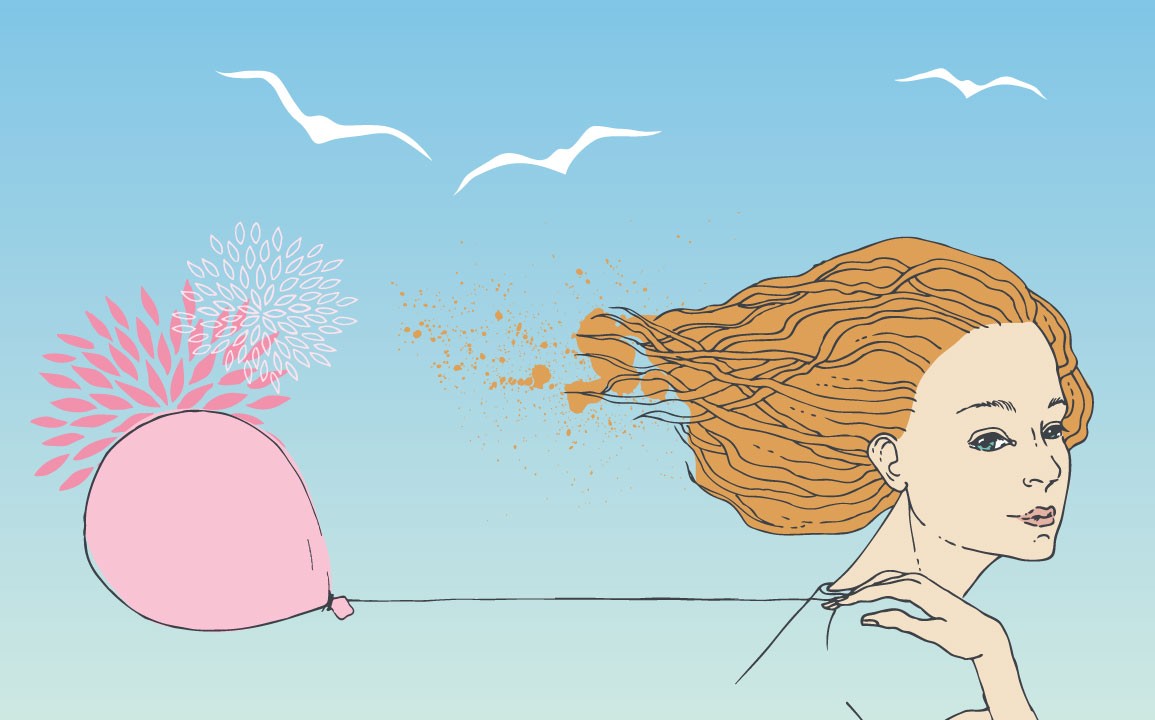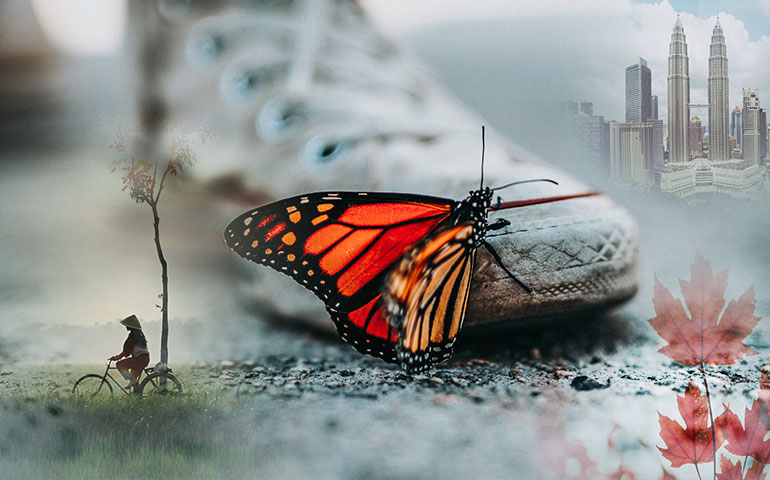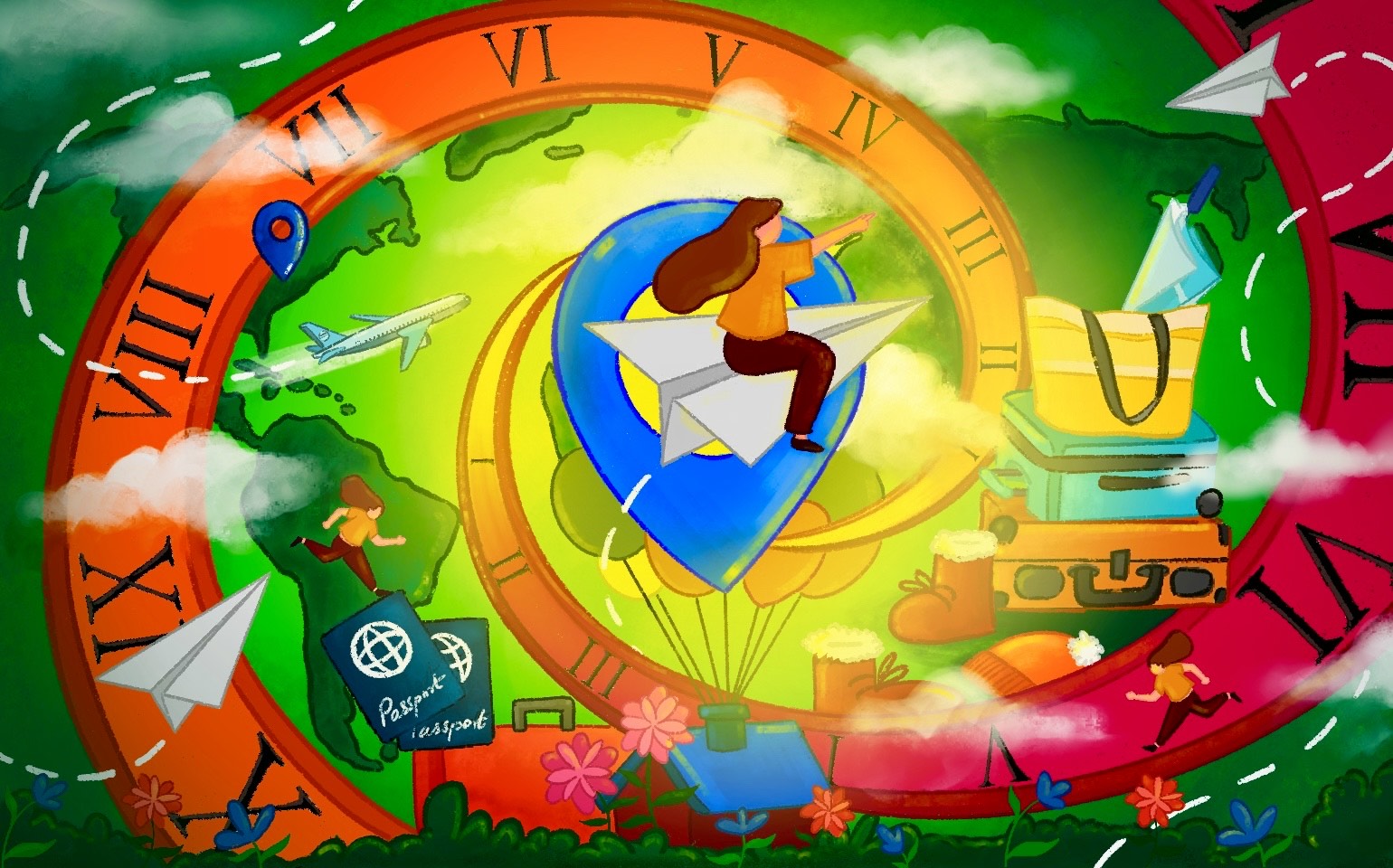
Pink Is No Longer My Favourite Colour: Personal Identity Is Ever-Changing
As a young child, my favourite colour was pink, a typical choice for any five-year-old girl surrounded by gender norms and stereotypes. My walls, bed sheets, clothes, toys, and nails all complied with this uniform I had essentially constructed for myself. The collection of pink objects and themes grew with time; my birthday gifts and cards were always pink. Likewise, my immediate and extended family associated the colour with me. This obsession lasted until I was ten years old, then my colour changed and my identity changed to blue. The reason for this change is unknown to me. One could argue that pink, on a scientific basis, is not an actual colour but a blend of violet and red making it a shade and does not have its own wavelength and therefore is not on the colour spectrum. Perhaps I unconsciously wanted to be a true colour.
Changing identity has been a repetitive theme in my adolescent life. I lived in Abu Dhabi and Saudi Arabia until I was seven. The climate was very hot and humid and could easily be treated with a swim in the pool.
Luckily, I was a natural-born swimmer; I spent hours underwater, on the blue-tiled floor of the pool, holding my breath and retrieving pool toys my parents would throw for me. I had an affinity for the water; gliding beneath the surface almost felt like a form of symbiosis, no other feeling could compare.
When my family and I moved to Canada, everyone I met had a passion: running, painting, soccer, or something else to identify themselves by. I felt like I needed to find an identity. I tried soccer, but I was scared of the ball. I tried running, but I was scared of the coach. Then I remembered my passion, swimming. My parents enrolled me in swim lessons; I quickly moved from level one to ten; I joined my school swim team that my dad helped coach; and I also joined a competitive swim club. Swimming became my identity or my new colour. I swam four days a week. When family called, they would ask me about swimming, my friends knew the days and times I swam, and swimming felt like the entirety of my identity.
I swam from age seven to fourteen. I bettered my strokes and strategy as a swimmer and became competitive. I enjoyed swimming and had the best stroke, breaststroke. However, as my identity as a swimmer became more manufactured, the less I enjoyed it. I disliked the idea of being competitive and allotting my time to this no longer was a passion. I argued with my parents about attending swim practice and did not want to enter competitions. When I swam it felt like I could no longer breathe, swimming no longer felt natural as it once did. The sport no longer appealed to me or my mental health. I stopped swimming, my “identity” was removed, and I felt I no longer had one.
Many things attribute to an individual’s identity: taste in music, family and cultural background, a hobby, or a favourite colour; however, a changing identity is natural in one’s personal growth. One singular thing cannot define an identity or a person.
When I stopped swimming, it felt like I lost my entire identity while in reality, a part of my identity simply changed. I felt conflicted and frustrated when I told people I no longer swam and was then encouraged to return to swimming despite how anxious or uncomfortable it made me feel. As time passed, I discovered new definitions of my identity such as painting, my love for animals, reading, and academic achievement. My experience of a fluid identity encourages my belief that the structure of one’s self or identity is often temperamental, non-linear, and organic. We cannot define ourselves as a person in adolescence or perhaps at any time, this is something I am learning. I no longer swim competitively and pink is no longer my favourite colour; however, I still enjoy swimming and have many pink things.



